What Is Commuted Value Of Pension?
Key Takeaway:
- The Commuted Value of Pension is the lump sum amount that a pensioner can receive instead of receiving periodic payments over time. This allows individuals to have more control over their finances and manage their retirement funds according to their needs.
- The factors which determine Commuted Value of Pension include age of retirement, investment climate and interest rates. The earlier the retirement age, the lesser the commuted value of pension. Higher interest rates and favorable investment climate lead to higher commuted value of pension.
- The calculation of commuted value of pension is based on a formula which takes into account various factors such as the amount and timing of pension payments, discount rate used, mortality rate, and the estimated return on investments.
Are you confused about the commuted value of pension? This article will help you gain a better understanding of this important concept and why it’s necessary to be aware of it. We’ll explain the basics and how it affects you, so you can make informed decisions about your future.
Understanding Commuted Value of Pension
Pension Commuted Value: Understanding and Definition
Commuted value of pension refers to the lump sum payment given to an individual instead of a steady stream of retirement income. The commuted value takes into account various factors such as life expectancy, current interest rates and age of the individual. The lump sum payment would be equal to the value of the pension that the individual would receive if they continued to receive monthly payments.
When an individual reaches retirement, they may choose to receive either an annuity payment or a commuted value. Choosing a commuted value means forfeiting the guaranteed steady income for a one-time payment. The commuted value is calculated using complex formulas considering several variables like the current interest rate, gender, age and life expectancy of the individual, among others.
It is important to note that commuted value is not always a voluntary option and may be offered to individuals who are leaving an employer’s pension plan. It is also essential to understand that once an individual chooses a commuted value, they cannot change their mind.
Commuted value of pension has become a popular option because people desire more control and flexibility over their retirement income. The present market condition has also led to substantial variations and often unpredictable changes in traditional pension plans leading many people to consider alternatives such as a commuted value.
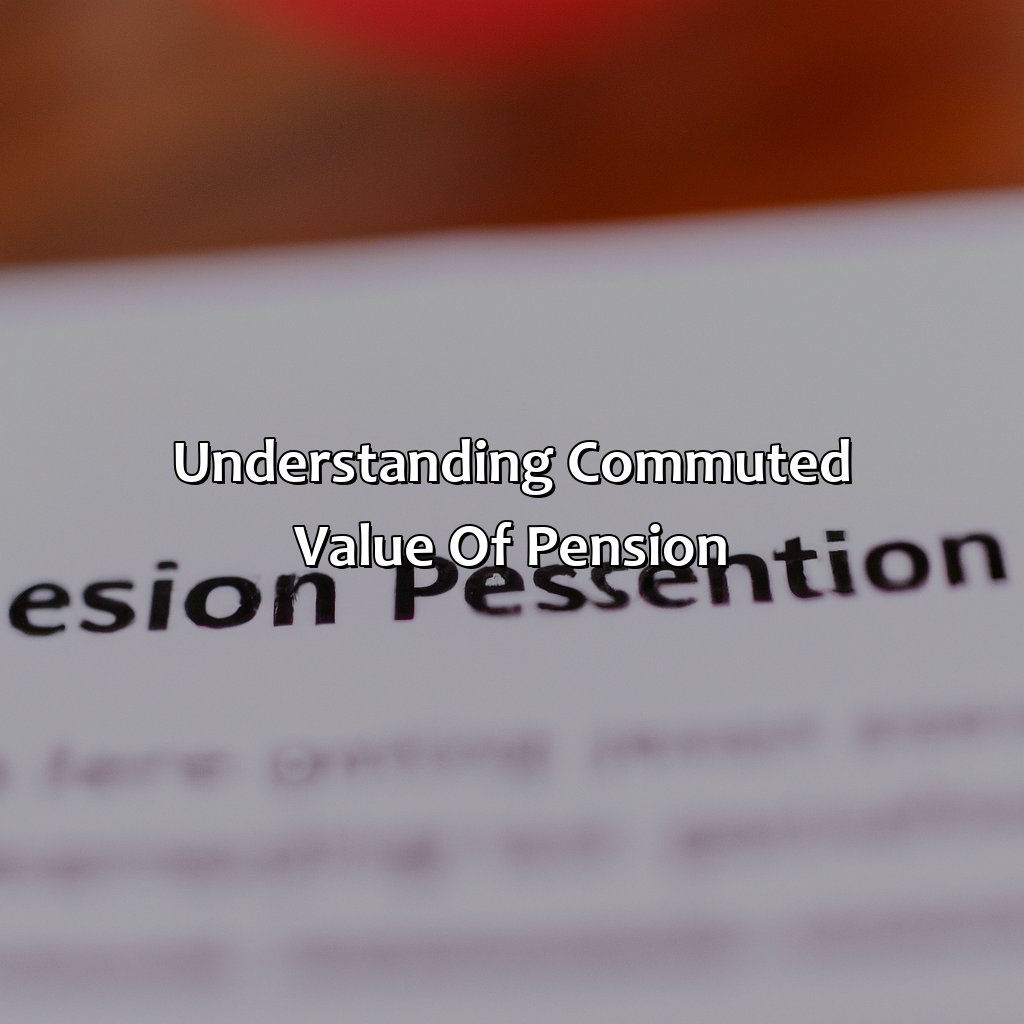
Image credits: retiregenz.com by Yuval Duncun
What is Commuted Value of Pension?
The Commuted Value of Pension refers to the lump sum amount given to an employee in lieu of their pension plan. This amount is calculated based on various factors, including the employee’s age, years of service, and the present value of the future pension payments. The commuted value is usually lower than the total pension payout but provides retirees with immediate access to their pension funds. It is important to note that once the commuted value is paid out, the employee’s future pension payments will cease.
It’s worth noting that the calculation of the commuted value can vary based on the type of pension plan and the rules governing it. For example, a defined benefit plan typically offers a higher commuted value than a defined contribution plan.
In some cases, commuted value calculations have been the subject of disputes between employers and employees. In the 1980s, there was a highly publicized case in the US where a group of employees successfully sued their employer over a faulty commuted value calculation, resulting in a multi-million dollar settlement.
Overall, while the commuted value of pension may offer retirees immediate access to their pension funds, it is important to carefully consider the factors and rules governing the calculation to ensure a fair and just payout.
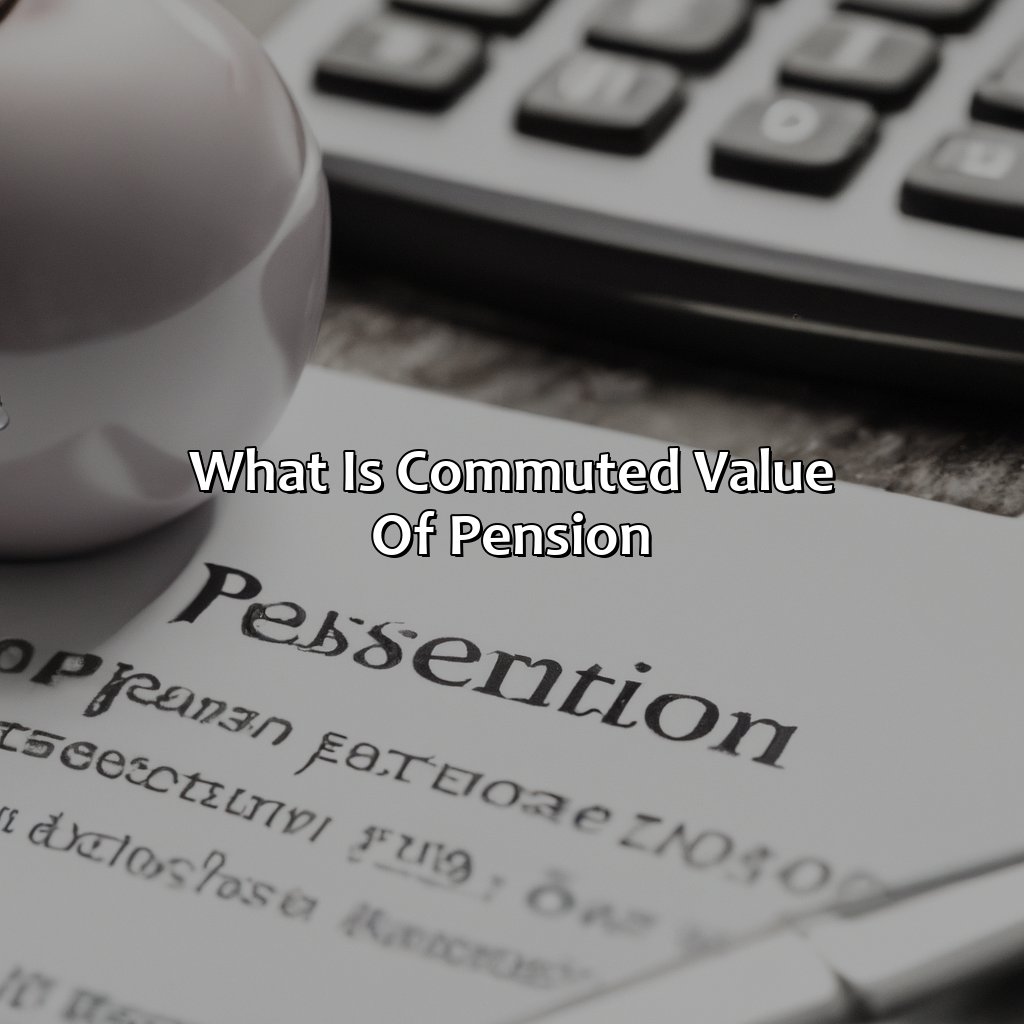
Image credits: retiregenz.com by Harry Duncun
Factors Affecting Commuted Value of Pension
Grasp the effects on your pension’s commuted value? Check out the “Factors Affecting Commuted Value” section. It has sub-sections like “Age of Retirement,” “Investment Climate,” and “Interest Rates.” These factors can heavily affect your pension’s worth. So, know these factors to make wise choices about your finances.
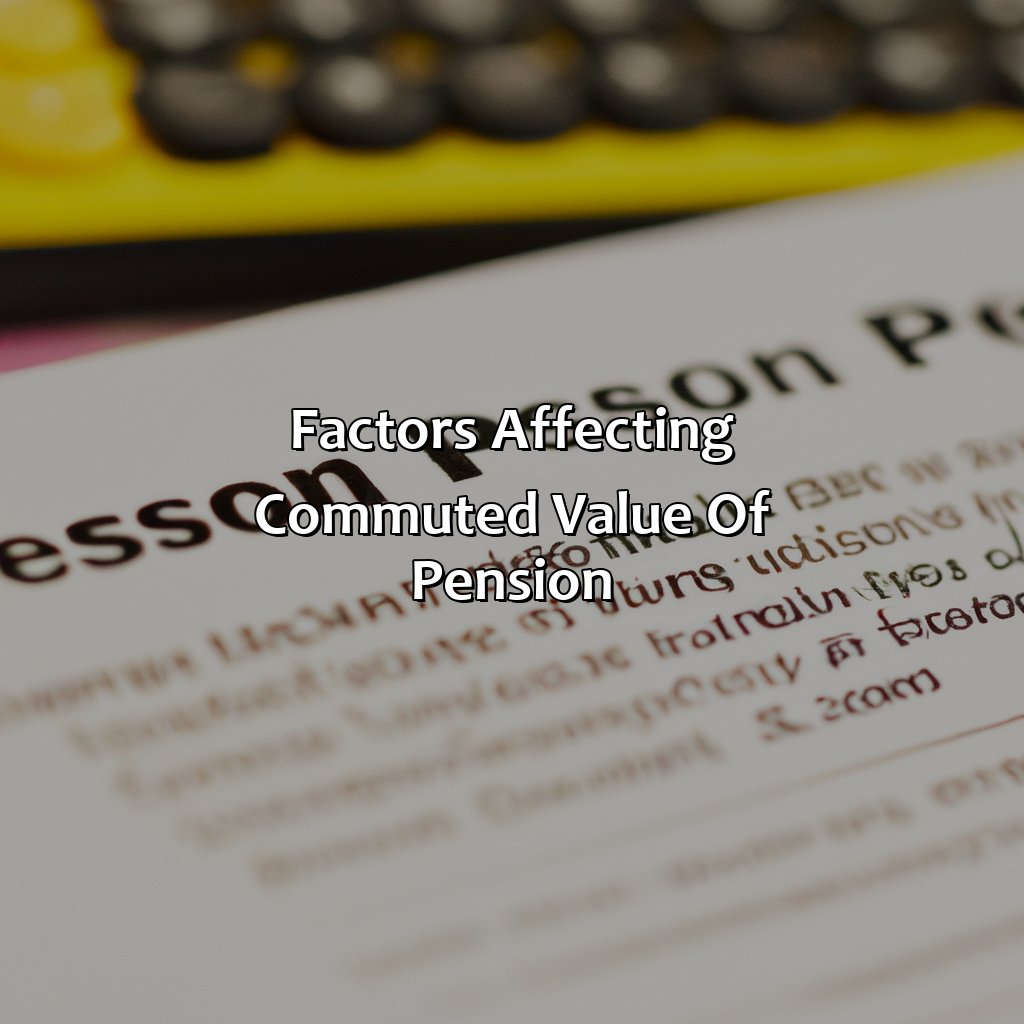
Image credits: retiregenz.com by Harry Woodhock
Age of Retirement
The pension commuted value is influenced by various factors like the employees’ service period, age, and salary. The Age of Pension Dealpoint has a direct impact on the commuted value. As an employee reaches retirement age, the commuted worth of their pension becomes more meaningful than its potential continuing worth.
The earlier an individual retires, the greater the probability that they will outlive their assets and that those assets will dwindle over time. A person’s expected lifespan is also a significant aspect to consider when determining pension debt.
Additionally, when an employee retires early in life, they miss out on additional years of service and salary increases that could improve their pension’s overall worth. It’s important to understand how much your pension is worth, such as a 70K pension, and what options you have for receiving it.
According to history records, in 2009, Canada introduced legislation requiring many private sector pension plans to combine long-term funding obligations and application of their going-concern or solvency ratios. This regulation changed how plan sponsors calculate lump sum payments from defined benefit plans because Commuted Value must now be calculated using a prescribed rate under provincial pension benefits regulations.
They say the investment climate is changing, but I’m pretty sure it’s always been stormy for pension plans.
Investment Climate
The economic conditions affecting long-term investments can be referred to as the financial environment. It includes factors such as inflation, interest rates, and stock market performance. These factors can impact the commuted value of pension plans. In addition, government regulations play a key role in the investment climate, and shifts in political power can result in changes to these regulations.
Pension plans are an important tool for retirement savings but their future value is subject to market conditions. The investment climate is crucial in determining whether a pension plan will meet its obligations or not. For example, if inflation rates increase, the commuted value of pensions decreases over time because it fails to keep up with inflation.
Furthermore risk management strategies should consider the potential impact of changes on investment decisions, particularly when dealing with assets that have exposure to volatile market fluctuations. It’s important for investors to understand these risks and take measures to mitigate them, including diversifying their portfolios across various types of assets. If you’re wondering how much is the old age pension, commuted value of pension is a topic you should explore.
In fact, there was a case where large shifts in the investment climate severely impacted a pension plan’s ability to provide benefits for its members adequately. In 2008 during the global financial crisis many people had their retirement savings wiped out because they were overly dependent on stocks without proper diversification − leading them into thinking that their money was safer than it ultimately was. Without proper risk management strategies and understanding of the investing climate, retirees can find themselves financially vulnerable. To avoid such risks, it’s important to understand what a Pay As You Go Pension Plan is and how it can help in securing your future.
Interest rates may rise and fall, but the commuted value of your pension will always be a constant source of confusion and despair.
Interest Rates
The impact of economic factors on the commuted value of a pension plan is significant. Changes in the interest rates can have a profound effect on commuted values. As interest rates rise, the commuted value decreases and vice versa. This is because higher interest rates imply that future payments will have a greater present value, lowering the total amount required to fund these payments.
Furthermore, assumed rates of return on investments or discount rate used in actuarial calculations also affect commuted values. Similarly, inflation plays a crucial role in determining pension values as higher inflation implies greater expenses for providing retirement benefits.
It is worth noting that the commuted value may fluctuate upon termination depending on these factors’ current market conditions. Upon termination, some employers require immediate payment of all vested benefits rather than monthly payouts. If you are wondering how much is the aged pension, the commuted value at that time determines the amount they will receive.
In one case study, a retiree found out that her pension’s commuted value dropped significantly due to the fall in interest rates compared to when she initially joined the scheme. She had to reconcile herself with receiving lower annual payments than anticipated. If you’re curious about how a pension is paid out, this article may provide some insight.
Ready to do some math? Don’t worry, calculating the commuted value of your pension is easier than finding a needle in a haystack, unless that haystack is your retirement plan.
Calculation of Commuted Value of Pension
The solution to calculate the commuted value of your pension is the formula given. The formula has two sub-sections:
- Formula for Calculation
- Example Demonstration
Knowing how to calculate it with the formula and seeing a practical example will help you understand the value of your pension.
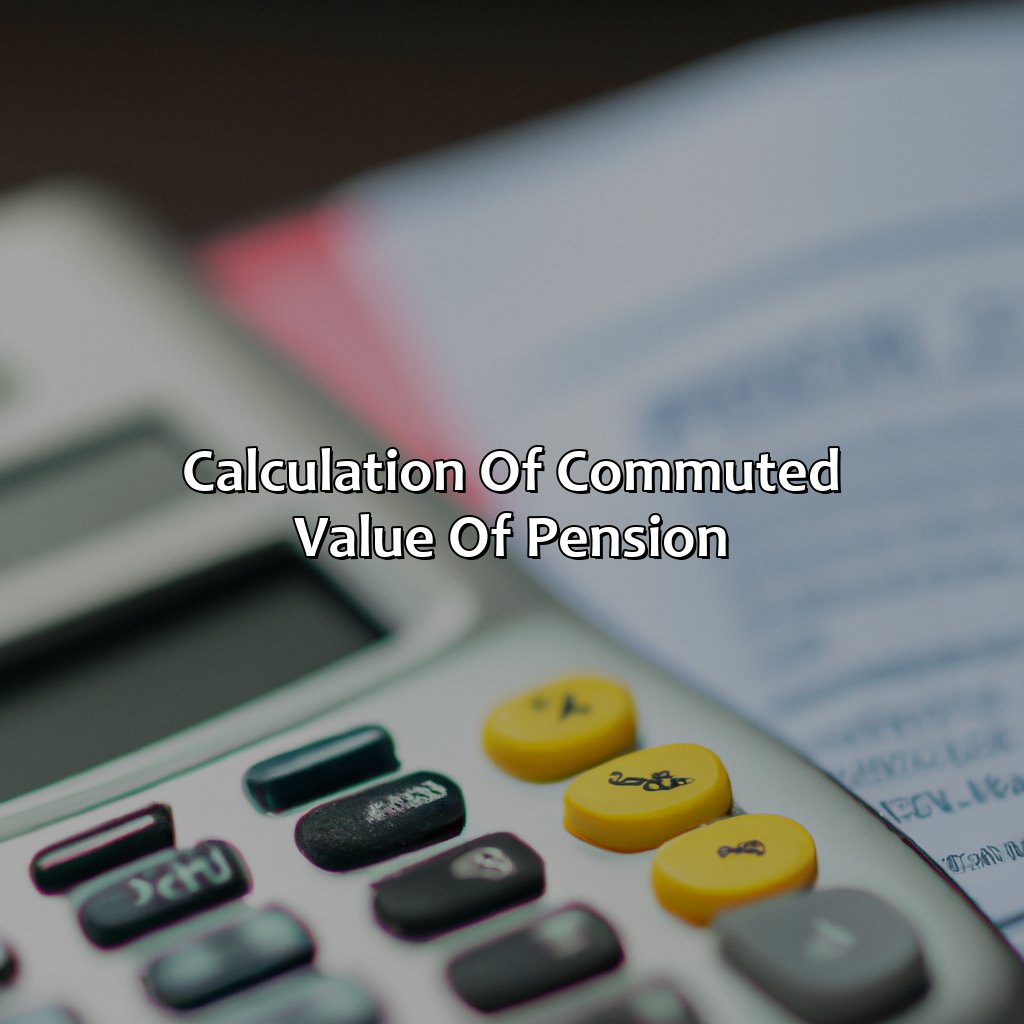
Image credits: retiregenz.com by Harry Arnold
Formula for Calculation
To determine the commuted value of a pension, several factors must be considered. This value represents the present-day worth of future pension payments expressed as a lump sum.
For the formula calculation below, assume that:
- The interest rate for discounting is 3%
- The annual pension is $40,000
- The expected payout term is ten years
| Calculation | Interpretation |
|---|---|
| PV factor (i.e., present value) = 1/(1+i)^n | Discount the annual pension amount by 3% per year |
| PV factor = 0.7441 | A discounted lump sum of $29,764 should be paid now to fund future payments worth $40,000 per year |
| Commuted Value (CV) = PV factor X annual pension X payout term | CV=0.7441 x $40,000 x 10 |
| Commuted Value (CV) = $297,641 | A lump sum payment of $297,641 can replace future pension payments over the next 10 years |
It is essential to note that commutation factors differ between defined benefit plans and defined contribution arrangements. Therefore, to understand how the Pension Act applies in your circumstances will require examination of specific rules relating to your particular entitlement.
When determining commuted values depends on multiple variables such as health conditions, age at retirement or termination date. Some people may choose to opt-out rather than retire and receive a reduced commuted value of their plan’s benefits.
Get ready for a riveting example demonstration that’s sure to make you say, ‘Wow, I never knew calculating commuted value of pension could be so exciting!‘
Example Demonstration
In this section, we will showcase a practical demonstration of how to calculate the commuted value of pension.
- It is crucial to understand that the commuted value of pension is the lump sum amount an individual receives upon retiring in place of their usual monthly pension payment.
- To begin with, one needs to know the current annual pension amount and the interest rate offered by the insurance company providing the policy. Using these two inputs along with certain other factors such as age and life expectancy, one can arrive at an accurate calculation for the commuted value of pension.
- It’s important to note that different companies have different formulas for calculating the commuted value of pensions, which can result in varying amounts depending on where your policy is held. Therefore, it’s recommended to consult with an expert or financial advisor to ensure you secure a favorable deal.
By following these steps accurately and efficiently, you’ll be able to calculate your pension commuted value effectively, and make informed decisions about retirement planning and investment choices.
Don’t miss out on securing your retirement future by neglecting to calculate your commuted value of pension beforehand. Taking advantage of this calculation can provide greater insights into long-term financial planning, especially when it comes to divorce settlement.
Commuted value of pension: giving you the option to either live well now or die trying to stretch your retirement funds.
Advantages and Disadvantages of Commuted Value of Pension
To grasp the pros and cons of commuted value of pension, let us look at two sections: Advantages and Disadvantages.
We’ll provide a brief overview of the potential advantages and drawbacks of opting to commute your pension plan in each section.
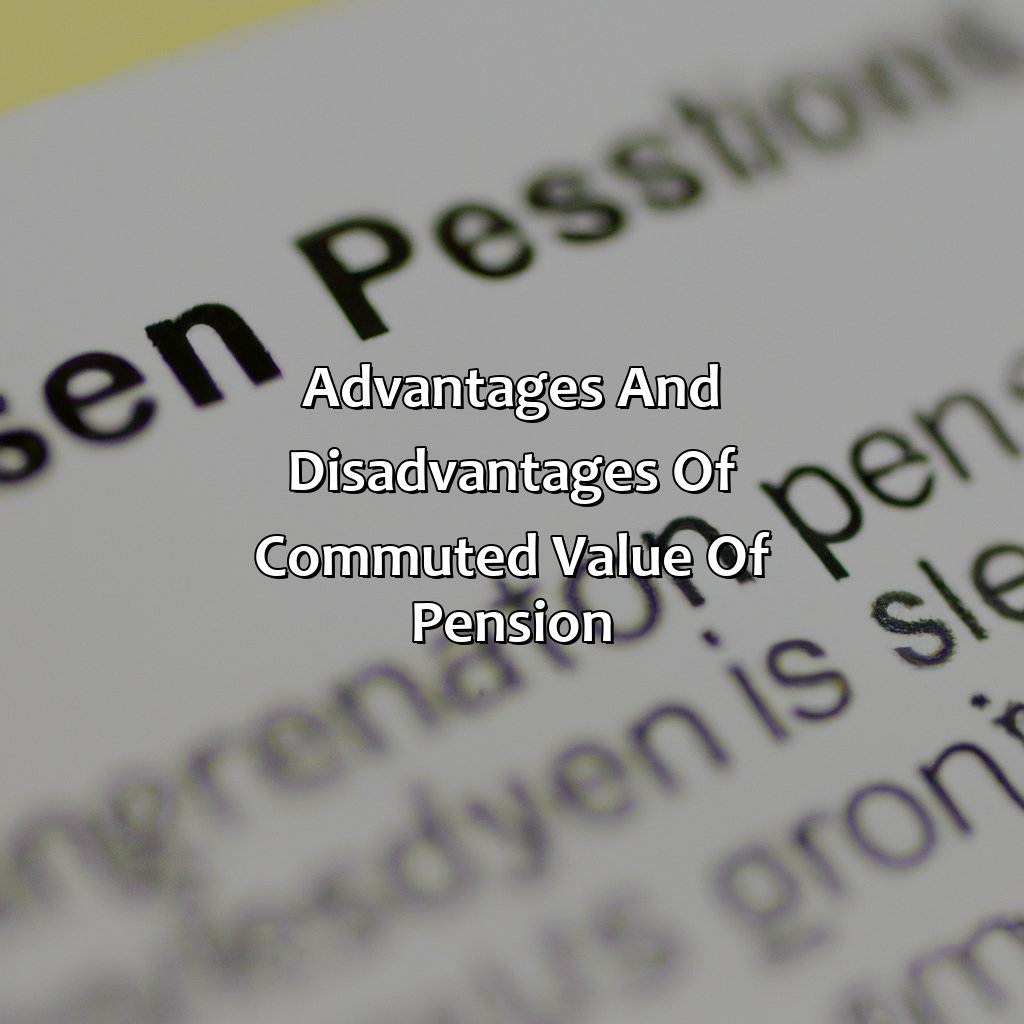
Image credits: retiregenz.com by James Jones
Advantages
Benefits of Choosing Commuted Value of Pension
For retirees, commuted value of pension provides a lump sum payment based on the present value of their future pensions. This approach offers several advantages, including:
- Flexibility with funds: Commuted value of pension helps retirees to fully manage their finances by providing the option to invest funds freely or use it to pay debts.
- Control over investments: Unlike traditional monthly payments, choosing commuted value can provide an immediate influx of cash that allows retirees to pursue their life plans without waiting for future payments.
- Greater choice in retirement income options: Commuted value also gives retirees more control over their retirement income stream. They are not restricted with fixed payments every month but have the ability to earn potential returns through investments or make withdrawals as they wish.
Lastly, note that choosing your pension’s commuted value should depend on your unique circumstances. Advisors can support you to decide whether it is better to receive periodic payments or a lump sum based on factors like tax implications or health concerns.
By understanding the benefits of commuted value pension plan and thinking beyond traditional approaches, retirees can take charge of their finances and lead fulfilling lives during retirement!
Commuted value of pension may make you feel like a lottery winner, until you realize the ticket only pays out once and then you’re on your own.
Disadvantages
Commuted Value of Pension-Risks to Consider
The calculation of the commuted value of a pension plan is complex and there are risks associated with it that must be taken into account. Here are some disadvantages of this approach:
- The commuted value may be less than the promised pension benefit, affecting retirement income.
- If the annuity selected yields lower returns than expected, there could be a shortfall in retirement income.
- Timing is important as interest rates affect the commuted value, so waiting for a better economic environment may be beneficial.
- Eligibility for benefits such as death benefits or health insurance may be forfeited due to a lump sum payout.
- A cash-out decision may result in taxes and other penalties in some situations.
It’s crucial to consider financial goals and factors like long-term care when making these decisions. A holistic approach involves balancing factors like tax planning, estate planning, and asset management with decisions about how much of the pension an ex-wife can claim.
John was considering his options when offered a commuted value of $350K for early retirement from his company’s pension plan. After consultation with a financial advisor and reviewing his long-term goals, he opted not to take the lump sum refund. Instead, he chose to keep receiving his defined benefit until his retirement age while contributing towards his RRSP and TFSA at an increased rate due to lack of contributions during decreased mortgage payments years.
Five Facts About Commuted Value of Pension:
Commuted value of pension refers to the lump sum amount that an individual can receive in exchange for their pension plan. (Source: Investopedia)
The commuted value of pension is calculated based on factors such as age, life expectancy, and interest rates. (Source: Sun Life Financial)
In Canada, the Income Tax Act sets the rules for how pension commutation payments are taxed. (Source: Canada.ca)
Commuting a pension plan can be a good option for individuals who need a lump sum amount to pay off debts or invest in a business. (Source: The Globe and Mail)
Commuting a pension plan can also be a risky decision as individuals may outlive their retirement savings. (Source: The Balance)
FAQs about What Is Commuted Value Of Pension?
What is commuted value of pension?
Commuted value of pension refers to the present value of a pension plan’s future payments, paid out in a lump sum.
How is commuted value of pension calculated?
The commuted value of pension is calculated using various factors such as the age and gender of the pension plan member, the amount of money they have contributed to the plan, and the plan’s expected investment return.
Who determines the commuted value of pension?
The commuted value of pension is typically determined by the pension plan administrator or by an actuary.
Can commuted value of pension be transferred to another plan?
Yes, in some cases, commuted value of pension may be transferred to another plan, such as a Registered Retirement Savings Plan (RRSP) or a Locked-in Retirement Account (LIRA).
What are the advantages of receiving commuted value of pension as a lump sum?
Receiving commuted value of pension as a lump sum allows the plan member to invest the money as they see fit and potentially earn a higher return than if the money remained in the pension plan. It also provides greater flexibility for the plan member to use the money as needed.
Are there any disadvantages to taking commuted value of pension as a lump sum?
Yes, there are some disadvantages to taking commuted value of pension as a lump sum. The plan member bears the investment risk and may not achieve the same level of income they would have received if they had chosen to receive the pension payments over time. Additionally, taking the commuted value may result in tax implications and reduction of pension benefits.
 Checkout this IRS Loophole
Checkout this IRS Loophole 
